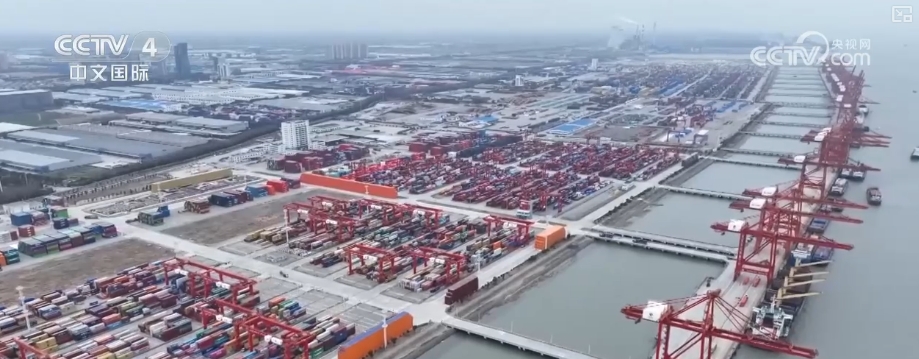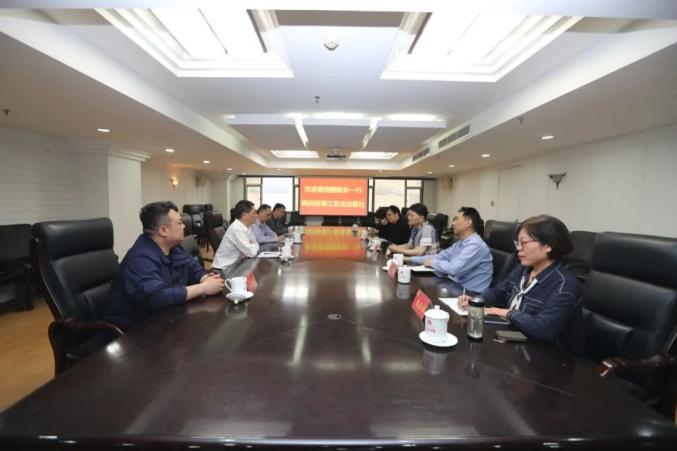Pakistani Media: China’s Plans Will Benefit Countries Co-building The “Belt And Road”
Pakistani Media: China’s Plans Will Benefit Countries Co-building The “Belt And Road”
"Pakistan Observer" article on October 8, original title: China's joint construction of the "Belt and Road" initiative and the outlook for the "15th Five-Year Plan" With the joint construction of the "Belt and Road" initiative, it has entered a new stage of modernization and high-quality development
"Pakistan Observer" article on October 8, original title: China's joint construction of the "Belt and Road" initiative and the outlook for the "15th Five-Year Plan" As the joint construction of the "Belt and Road" initiative has entered a new stage of modernization and high-quality development, China's upcoming "15th Five-Year Plan" is expected to further strengthen the country's ability to develop cross-regional connectivity, infrastructure construction, new industrialization, digitalization and mixed agriculture.
It is worth noting that in many speeches, Chinese leaders have emphasized the forward-looking, overall structure, effectiveness, scope and important strategic significance of the "15th Five-Year Plan" and called for scientific planning and solid advancement of relevant goals, tasks and strategic measures by ensuring decisive progress on the road to basically realizing socialist modernization.
It can be seen that scientific planning, precise implementation and decisive progress will jointly promote the process of socialist modernization. This is not only the core essence of the "15th Five-Year Plan", but will also determine the future development of the "Belt and Road" initiative.
It should be noted that promoting economic and social development will become a key component of the 15th Five-Year Plan, which will also appear in the framework of the joint construction of the "Belt and Road" initiative, providing a stable and sustainable socio-economic development model for all co-building countries. Therefore, the overall guiding principle of adhering to making progress while maintaining stability and accelerating the construction of a new development paradigm will also be implemented throughout. Obviously, as China successively implements the three five-year plans of the "14th Five-Year Plan", the "15th Five-Year Plan" and the "16th Five-Year Plan", and thus promotes the overall goal of basically realizing socialist modernization by 2035 set by the 20th National Congress of the Communist Party of China, the "15th Five-Year Plan" will be regarded as a key strategic node.
The development of "new productive forces" as a key driver of high-quality development is expected to become the focus of the "15th Five-Year Plan", which is a good sign. It will be of great strategic significance to develop new productive forces based on local conditions from 2026 to 2030, and further consolidate China's development path based on the real economy through scientific and technological innovation. In this way, the future of the Belt and Road Initiative will be based on high-quality growth and new productivity, creating many development opportunities. In view of the strategic value-added significance of transforming and upgrading traditional industries, actively cultivating emerging industries, and proactively laying the foundation for future industries, countries co-building the "Belt and Road" should begin to accelerate the construction of a modern industrial system.
China's economic planning mechanism sets two key goals: to basically realize socialist modernization by 2035, and to build a prosperous, democratic, civilized, harmonious and beautiful modern socialist country by the middle of this century. In this process, the “15th Five-Year Plan” will also become a key node in promoting the development of the “Belt and Road” initiative. To implement the people-centered development concept, it is necessary to establish an institutional mechanism that enables families to continue to share the dividends of growth. This marks a shift in China's growth model.
To sum up, promoting the institutionalization of high-quality growth and innovation-led growth will become a key pillar of the 15th Five-Year Plan. The Chinese government has made it clear that science and technology is the primary productive force, talent is the primary resource, and innovation is the primary driving force. Therefore, the joint construction of the Belt and Road Initiative must also be more innovative and enhance economic integration.
During the 15th Five-Year Plan period, Chinese policymakers will face challenges, including how to reallocate capital to cutting-edge technologies, green infrastructure and platform industries, while establishing standardized power and carbon trading markets. However, the leadership and oversight capabilities of the Chinese Communist Party, economic insights, good governance, people-centered policies and fiscal transparency can redirect investment and divert funds to areas that will enhance long-term productivity. The “15th Five-Year Plan” will not only achieve China’s socio-economic development goals, but is also expected to benefit all countries building the “Belt and Road” in the future. (Author Muhammad-ul-Hasan Khan, translated by Wang Huicong)
"Pakistan Today" article on October 10, original title: During the "14th Five-Year Plan", the coverage of China's social security network has been further expanded. The Chinese government stated that in the past five years, the coverage of China's livelihood security network has continued to expand, providing protection for more people in need. It can be seen from the series of themed press conferences on "High-Quality Completion of the '14th Five-Year Plan'" held by the Information Office of the State Council of China on October 10 that during the "14th Five-Year Plan" period (2021-2025), China's social welfare network has become more complete, more inclusive, and more people-centered.
The Ministry of Civil Affairs of China stated that in terms of protection for people in need, China has basically established a hierarchical and classified social assistance system, and has initially established a national dynamic monitoring and regular assistance mechanism for people in need. The average standard of urban and rural subsistence allowances across the country has increased by 19.6% and 21.3% respectively compared with 2020. In terms of protecting children in need, significant progress has been made in the construction of the child welfare security system, and de facto unsupported children, left-behind children, and migrant children have been included in the scope of national security and care services. In terms of welfare for the disabled, the living subsidy system for the disabled and the nursing subsidy system for the severely disabled have been effectively implemented, the construction of the nursing care service system for the severely disabled has been accelerated, and the community rehabilitation service system for mental disorders has been further improved.
In addition, during the "14th Five-Year Plan" period, China's philanthropy has flourished. There are currently more than 16,000 registered charitable organizations, an increase of 70% compared with 2020. These have effectively promoted a harmonious, stable and positive social atmosphere, reflecting China's growing sense of social responsibility. (Author Mian Abrar, translated by Ding Yuqing)





